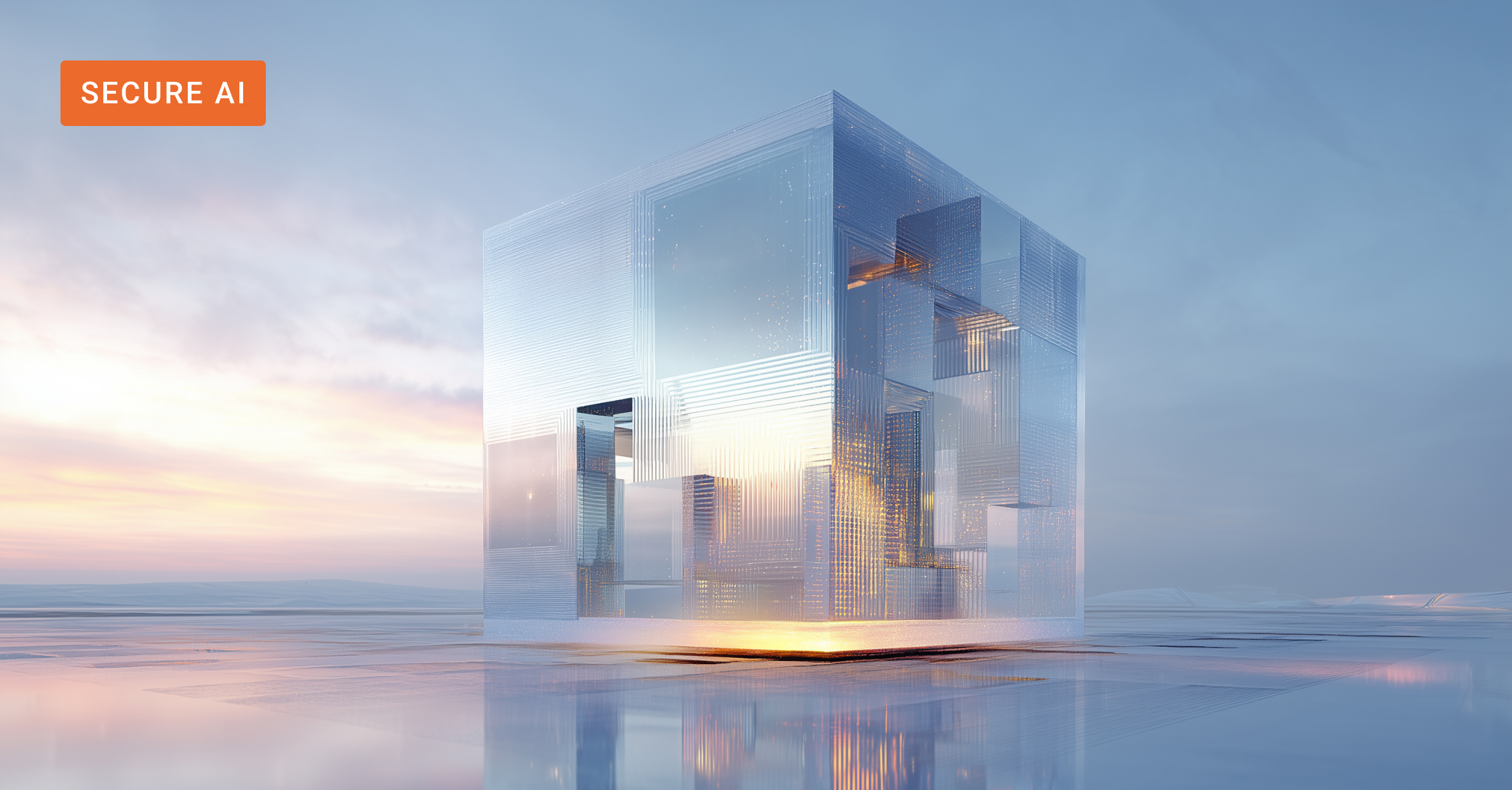Are your AI agents not living up to their full potential? Perhaps they're fluent but unreliable, confidently "hallucinating" facts or missing crucial, subtle connections? You've invested in powerful AI agents and even knowledge graphs, yet they still fall short on complex enterprise tasks? The problem isn't just bad data; it's a fundamental limitation: they lack the ability to infer beyond explicitly stated facts, which prevents them from delivering the reliable, trustworthy insights your business demands. The solution lies in equipping them with an inference-bearing knowledge graph.
Imagine you're an engineer at a major telecom, tasked with certifying a new IoT device for your 5G network. You deployed an LLM-powered AI agent to speed things up by automatically retrieving relevant information from across the organization – device specifications, network capabilities, and regulatory compliance documents. In minutes, the agent delivered a comprehensive report. But after some due diligence, you realize that it cited deprecated security protocols and completely missed mandatory regional requirements based on the deployment market.
In short, the agent was fluent; it simply wasn’t reliable enough to be trusted.
So you tried again, only this time with an agent backed by a knowledge graph. Think of a knowledge graph as a meticulously structured network of facts and their relationships that describes your domain. It’s a framework that provides the clarity, context, and factual grounding that your GenAI initiatives need to deliver reliable, actionable intelligence.
This knowledge graph-informed agent knew the explicit rules: "Device X uses Protocol Y," and "Protocol Y requires Standard Z." But when you asked it to find potential vulnerabilities for the new IoT device, it, too, hit a wall, albeit one that was much more subtle and nuanced: It couldn't see that a component in the device was part of a subsystem with a known vulnerability in a different but related context.
Though comprehensive, this more advanced enterprise knowledge graph was unable to connect those dots or deduce new insights.
So, where’s the problem? Despite their capabilities, these AI agents are both missing something crucial: the ability to reason and infer beyond facts explicitly captured by the knowledge graph. They need more than just information. They need AI inference. To truly deliver value in challenging enterprise settings, AI agents need an inference-bearing knowledge graph. In this article, we’ll take a look at what that means, why it’s such a game-changer, and what it takes to turn it into reality to unlock trusted AI.
The Problem with "Brainless" AI Agents
While large language models (LLMs) excel at generating human-like text, they often fall short on complex, more demanding tasks. LLMs operate on statistical patterns, not semantic comprehension.
Let’s take a simple example: planning a business trip. Without human oversight, an LLM might book flights and hotels, but could easily "hallucinate" a non-existent connection or miss a critical visa requirement. In such multi-step processes, mistakes like these are a showstopper. For AI to truly deliver in the enterprise, it needs to move beyond statistical fluency to factual accuracy and inferential power. Otherwise, AI hallucinations and a lack of explainability risk wasting your time, as you are forced to verify and correct AI mistakes instead of getting on with your work.
What is an Inference-Bearing Knowledge Graph?
An inference-bearing knowledge graph isn't just a database for facts. It’s a rich semantic network that empowers your AI agents to go beyond simple lookups, enabling them to perform logical deductions, infer implicit relationships, and draw conclusions from interconnected facts, even when those connections aren't explicitly stated.
What does this look like in practice for your AI agent? Here are some examples:
- Transitive Relations: If "Component A is part of Subsystem B," and "Subsystem B is critical for Function C," the agent can infer that "Component A is critical for Function C." For your IoT device, this means inferring security implications down the component chain.
- Property Inheritance: If "All 5G IoT Devices require AES-256 encryption," and "New Smart Meter Model D is a 5G IoT Device," the agent infers that "New Smart Meter Model D requires AES-256 encryption."
- Constraint Checking: If a rule states, "Any device handling sensitive personal data must comply with GDPR," the graph can infer a violation if a device collects such data but lacks compliance flags.
This ability to infer new facts from structured relationships and rules, enabled by an inferential knowledge graph, transforms a static collection of facts into a dynamic, reasoning engine for your AI agents.
Why Inference-Bearing Knowledge Graphs are a Game-Changer
Inference-bearing knowledge graphs offer a significant upgrade over traditional RAG relying solely on vector databases. Let's revisit our telecom engineer's challenge:
- Contextual Depth: Traditional RAG provides semantic similarity, but an inference-bearing knowledge graph provides deep, structured context. It understands how Device X relates to Protocol Y, how Protocol Y governs Security Standard Z, and how a component fits into a vulnerable subsystem. This leads to far more accurate understanding in complex, regulated environments.
- Explainability: Unlike black-box LLM hallucinations, an inference-bearing knowledge graph can show the "reasoning path" behind an AI agent's decision. If an agent flags a vulnerability, it can trace the inferential steps through the graph, explaining why it reached that conclusion. This transparency is crucial for auditing and building trust, a tenant of explainable AI (XAI) and achieving compliance for AI chat systems in regulated industries.
- Complex Reasoning: Vector databases struggle with complex, multi-hop queries. Inference-bearing knowledge graphs excel at connecting explicit facts to generate new knowledge through logical inference, enabling agents to uncover insights that aren’t stated outright but follow logically from the data. Simpler systems miss these nuanced, structured connections.
- Reduced Hallucinations: Grounding AI agents in a verifiable, inference-bearing knowledge graph drastically reduces fabricated responses. Every deduction is traceable to a structured, governed knowledge base, leading to more reliable and trustworthy outcomes.
In essence, inference-bearing knowledge graphs provide the logical backbone that empowers AI agents to move from clever mimicry to genuine intelligence, advancing the scope of enterprise GenAI beyond RAG.
Building Your Inference-Bearing Knowledge Graph
If you are convinced that an inference-bearing knowledge graph is the missing link for truly capable AI agents, how do you actually go from concept to creation?
At the core of this task is the ontology – the semantic schema that provides the logical framework for how all your enterprise knowledge connects and interacts. It's the very foundation that allows your AI agents to deduce knowledge beyond what is explicitly asserted in the graph. Through the ontology, you imbue the knowledge graph with the rules and relationships that enable automated reasoning and the inference of new facts. Building these powerful graphs is a strategic process, guided by these clear steps and supported by increasingly robust tools:
- Strategic Alignment and Data Discovery: Link your knowledge graph initiative to business goals. Identify and gather all relevant data sources (legacy systems, documents, expert insights) to build a comprehensive foundation.
- Designing the "Knowledge Blueprint": Define the structure of your knowledge. Refine vocabulary, eliminate ambiguities, and organize concepts into clear hierarchies for easy navigation and understanding by AI agents.
- Ensuring Data Quality: "Garbage in, garbage out" applies here. Focus on clean, accurate data, addressing synonyms, misspellings, and variations for reliable inferences to improve AI accuracy and mitigate biases in generative AI.
- Schema Design: Build the logical framework (ontology) defining entities, properties, and relationships. This structured approach, potentially with multi-scheme design, enhances context for your AI applications.
- Governance and Evolution: Knowledge graphs are living systems. Implement clear governance, roles, and lifecycle management. Ensure seamless integration with existing systems via APIs. Regularly update and audit for accuracy to ensure AI auditability and trustworthy AI systems.
- Automated Extraction and Activation: Combine Retrieval-Augmented Generation (RAG) and Knowledge Graphs into GraphRAG to ground GenAI responses in validated data, minimizing hallucinations and unlocking superior contextual understanding.
Knowledge Graphs vs. Vector Databases for RAG
Vector search represents data as numerical vectors, finding semantically similar data. It's great for understanding natural language context but can be probabilistic and the lack precision expected of enterprise search software.
Knowledge graphs use defined taxonomies and ontologies to classify data, creating a network of interconnected concepts and relationships. This enables true semantic search.
- Determinism and Accuracy: Knowledge graphs provide increased accuracy and reliability in RAG, critical in regulated sectors, offering authoritative, human-curated domain knowledge.
- Machine Inferencing: Knowledge graphs facilitate complex deductions across the graph, enabling AI agents to generate new knowledge from existing data.
- Beyond Similarity: Knowledge graphs capture how data is related through logical connections, allowing for multi-hop reasoning that goes beyond just finding similar items, or semantic reasoning AI.
The most powerful approach is to combine vector search with Knowledge Graphs (GraphRAG). This leverages vector search's efficiency for initial retrieval with knowledge graphs, providing precise context and ensuring relevant, verifiable information. This combination enhances RAG accuracy, minimizes hallucinations, and enables nuanced, explainable AI responses.
Examples of AI Agents Powered by Inference-Bearing Knowledge Graphs
The power of inference-bearing knowledge graphs truly comes out in diverse real-world applications:
- Financial Risk & Compliance: In banking and financial services, an AI agent in a bank can infer complex, hidden risks (e.g., indirect affiliations with high-risk entities) by deducing subtle connections not obvious in raw data. It flags potential fraud or non-compliance by tracing inferred relationships across seemingly disparate entities.
- Healthcare Diagnostics: An AI agent can infer optimal treatment pathways by considering a patient's full medical history, genetics, drug-gene interactions, and latest research, even if correlations aren't explicitly coded. It can personalize treatment and improve safety by recommending alternatives based on complex inferred interactions.
- Supply Chain Optimization: In manufacturing, an AI agent can infer potential disruptions from cascading effects across the entire supply chain, not just direct supplier failures. It deduces impacts on unrelated products, identifies alternative sourcing by inferring similar properties, and predicts cost changes, enabling proactive adjustments.
- Customer Support: An AI agent can infer the likely cause of a "product delivery" issue by cross-referencing order status, carrier data, weather patterns, and common issues in specific areas. It proactively offers solutions and provides full context to human agents, enhancing customer experience by understanding the underlying problem.
The Future of AI Agents: Towards Truly Intelligent Systems
AI agents are evolving from simple task execution to increasingly complex, even autonomous, operations. This shift hinges on their ability to move beyond information processing to genuine intelligence, a capability driven by inference-bearing knowledge graphs.
These graphs provide the cognitive scaffolding for AI agents to:
- Reason about complex, ambiguous situations: Cognitive AI systems are able to capture context and deduce implications.
- Learn and adapt more effectively: Growing smarter by continually incorporating new facts and relationships.
- Operate with greater autonomy and precision: Making more robust, trustworthy decisions, reducing the need for constant human oversight.
- Provide explainable outcomes: Crucial for auditability and building confidence in AI systems.
For business leaders, inference-bearing knowledge graphs are becoming a key differentiator for their generative AI platforms, a trend that will continue to gain traction as agentic AI goes mainstream. To capitalize, partner with a provider proven in deploying scalable solutions in demanding environments where accuracy, security, data privacy, and scalability are paramount.
Are you ready to move beyond theoretical GenAI capabilities to implement a future-proof enterprise GenAI platform capable of harnessing your institutional intelligence for real business impact? Find out what it takes to close the accuracy gap in generative AI in our dedicated white paper. Or, if your organization already operates using an enterprise taxonomy, build on that investment and take the fast track to advance enterprise GenAI.








